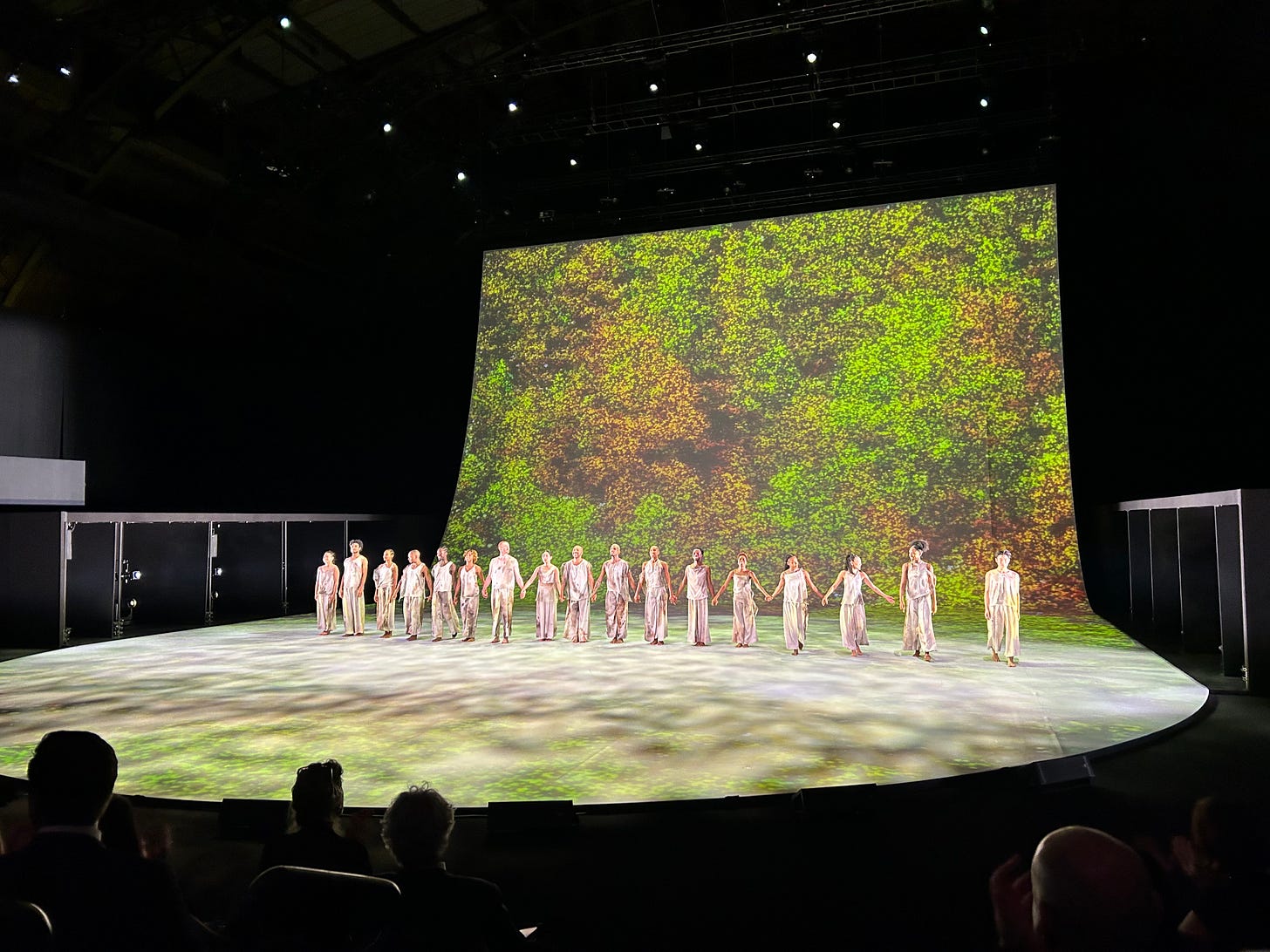After “Dear Lord, Make me Beautiful,” at the Park Avenue Armory
The Park Avenue Armory is a special place. The final Merce Cunningham performances were held there, an epic event that filled several platforms laid out across the gargantuan drill hall, which fills an entire city block. As was De Keersmaeker’s thrilling exploration of the Brandenburg Concertos, and Bausch’s Rite of Spring performed by dancers from the École des Sables. Compared to these, Kyle Abraham’s Dear Lord, Make Me Beautiful is a calm, intimate affair; intimate, despite the enormous size of his canvas. A dappled projection, by Cao Yuxi fills the back wall and floor of the space, like a waterfall pouring down from the ceiling and toward the audience, who sit on risers. To the side, atop a platform, are the musicians of yMusic, a combination of strings, woodwinds, percussion, and at least one saxophone. The dancers emerge from wings that have been built along both sides. Abraham doesn’t feel the need to overpopulate the space. If I had to pick a single word to describe “Dear Lord” it would be spacious. The dancers move in a way that suggests looseness and air within their joints that allows them to expand into the world around them. They lope, they glide, with silken ease. With the help of Cao Yuxi’s visual design, Karen Young’s flowing costumes, and the lighting of Dan Scully, they appear to merge into the dappled landscape, through which they swim like schools of fish or soar like birds flitting across the sky. Impossible not to think of Cunningham’s Summerspace, with its dappled Rauschenberg design, except that here the colors are in constant movement, like light shining through leaves or water. Like the shifting musical landscape in which the dancers move, the work suggests the changing seasons. Abraham, who dances throughout, alone and as part of the group, appears to be reflecting on the different phases of life: the eagerness of youth, the knowledge of adulthood, and the moments of isolation, doubt, and vulnerability that come with age. As well as everything in between: relationships, beauty, the accumulation of knowledge, nature. At the start, he traces circles around the space, gleefully at first, then with confidence and abandon, and finally with a kind of laboriousness. He is young, he is old. (Without meaning offense, I was reminded of an old Marcel Marceau classic, “Youth, Maturity, Old Age, and Death,” that I once saw live and left me in a puddle of tears.) Here, life comes and goes in a constant flow, like the tides. “Dear Lord” is the dance of a man looking back on a life, like Taylor’s “Beloved Renegade” or "Robbins’s “Watermill,” except that Abraham is more honest about the anxiety that comes with such reflections. He often looks glassy-eyed, even lost. What is missing in his depiction, perhaps, is the uglier side of life—here, all is beauty, intimacy, tenderness. Perhaps what Abraham wants to render beautiful is not so much himself as the entire world.







Thanks, Marina. I'm still hoping to go, but not sure I can get there. Glad to read this and see some photos. I really enjoyed "Mercurial Son" and wanted to see his next work.
Beautifully written, great description and photo-journalism. Debra